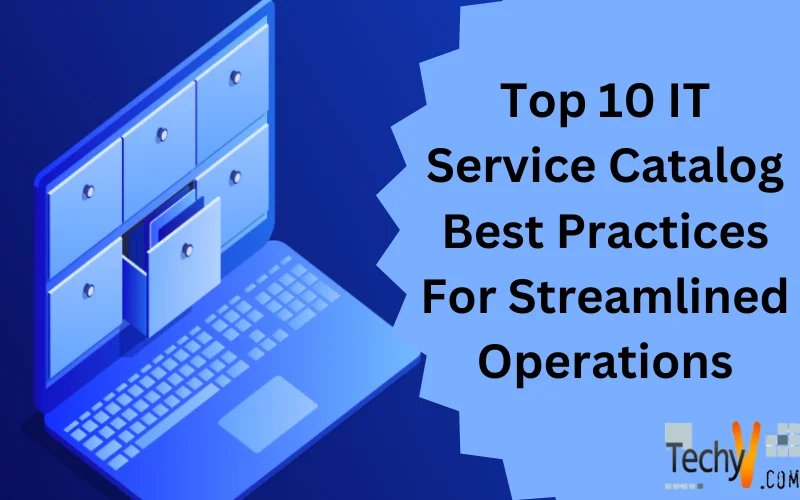Amidst the complexity of enterprise technology environments with interdependent servers, networks, business applications, cloud platforms, devices, and support teams, individual employees often struggle to discern what services exist for empowering their workflows. Absent clarity on the range of offerings IT provides for fulfilling diverse needs, organizations risk workers developing rogue workarounds, underutilizing helpful systems, or submitting tickets for easy self-service capabilities. Constrained IT resources likewise strain assisting basic requests when overburdened. Modern best practices around IT catalogs emphasize audience relevance over purely technical perspectives. Leading entries communicate service functionality, users aided, activities enabled, access instructions, reliability promises, and assistance procedures in digestible portions. Governance models thereafter maintain accuracy as services evolve amidst technology shifts. Promotional campaigns, embedded integration into HR/IT portals, and leveraging usage metrics/user feedback help drive adoption rates based on genuine utility. As growing digital transformation fuels IT complexity across enterprises, service catalogs play an integral role in demystifying what otherwise risks becoming an impenetrable array of infrastructure hindering business progress.
1. Prioritizing Users’ Needs
IT often focuses on specs, protocols, and compliance in articulating services, but catalogs should concentrate on real language explaining workforce pain points solved. Avoid techie jargon, instead list offerings addressing goals like sales automation, digital marketing, drones inspecting product quality, AI predicting busy call times, and such. Arrange entries focused on user needs rather than IT’s organizational structure for quick comprehension.

2. Avoiding Complex Jargon
Technical catalogs brimming with multi-syllabic clutter and acronyms intimidate users, reduce adoption, and increase assistance tickets for deciphering. Rather than SOC 2 and PCI DSS compliance, list “Data Security” services. Instead of “Azure Active Directory Federation Services”, list “Cloud Identity Management.” Platform names generally matter less than articulating related needs fulfilled. Plain language and dividing complex platforms into digestible modules counter confusion.

3. Ensuring Relevance
Updating stale, bloated catalogs straining user patience risks abandonment. Adding each minor backend tweak bloats catalogs with marginal value. Limit entries to relevant self-serviceable offerings broadly adopted currently or planned for integration, while pruning defunct ones. Surveying groups on used/desired services indicates inclusion priorities from customer perspectives supplementing bottom-up IT platform knowledge. Reaffirm catalog direction by re-surveying annually.

4. Offering Various Forms Of The Catalog
Accessibility and ease of roaming catalogs warrant multiple formats targeting differing worker needs. Web portals afford intuitive browsing and self-service requests, while PDF versions enable offline perusal and mobility for road warriors. Well-organized Excel tables allow manipulating data to analyze trends or model total cost of ownership for services mix decisions. Providing complementary formats prevents user frustration. Modern APIs also feed custom development consumption.

5. Controlling Information
Lengthy catalogs lose reader engagement so editing warrants care by designing skimmable layouts with tight text, ample whitespace, and descriptive charts/graphics. Leading with bulleted executive overviews listing offering names and one-liner benefits counters information saturation. Concise main descriptions articulate value proposition, target users, and key activities enabled. Deeper detail appends in expandable sections for the curious while benefitting consumability. Mind length as shorter drives utilization.

6. Including Essential Details
While summarization has its benefits, the catalog still needs comprehensive details on each service. Descriptions require sufficient context for users to understand capabilities, constraints, and trade-offs. This warrants outlining key activities, deliverables, and timelines involved plus prerequisites users must complete beforehand. Catalog authors need to balance clarity and depth across the necessary details proactively rather than waiting on user queries. Augmenting summaries with layered specifics empowers audiences to make informed decisions.

7. Focusing On Effective Design And Implementation
While seemingly a utility, aesthetically pleasing designs engage users and amplify ease of navigation just like consumer web properties. Modern templates with ample white space, logical groupings, consistency, filter/search functions, and descriptive icons improve experiences. Establish taxonomy governance to maintain order as the catalog evolves. Accelerate time-to-value by partnering templates with capable technology platforms built for catalog management. Beyond content, focusing interfaces and integration planning phases set the platform as a truly adopted catalog.

8. Driving Adoption
Even the best catalogs fail absent end-user awareness and buy-in. Multifaceted campaigns across email, intranet, signage, events, training, and gamification inject catalog visibility. Analyze metrics like search frequency, service consumption trends, and survey feedback to quantify impact. Continually refine communication and content to resolve adoption barriers. Guide users at the outset via hands-on walkthroughs until self-service behaviors cement. User experience testing also offers objective feedback for continual enhancement. Dedicated adoption initiatives lead to organic growth as early evangelists influence wider behaviors.

9. Maintaining The Catalog
The accuracy and structure of catalogs degrade without diligent upkeep. Assign catalog managers to coordinate the activities, technologies, and policies that underpin catalogs. Log auditing changes, implement a service retirement process, and review business-impacting modifications through change control. Regularly solicit user input via surveys, focus groups, and governance forums to pinpoint areas for enhancement. Assigning maintenance ownership instead of broad responsibility also promotes accountability for catalog preservation. Prioritizing agile, consistent catalog administration is key to prolonged value delivery.

10. Providing Centralized Repositories
Consolidating access to authorized IT services, relevant self-help, and shared documentation into a “one-stop shop” bolsters IT’s central role in enabling business outcomes. Well-constructed catalogs assembled on capable platforms yield dividends over time provided groups invest in the surrounding governance to safeguard integrity. Prioritize catalogs as living governance artifacts that adapt in synch with technological and organizational changes. Furthermore, integration with complementary IT systems including incident, change, and configuration repositories strengthens end-to-end service delivery. A foundation of integrated data and platforms amplifies catalog capabilities.



















